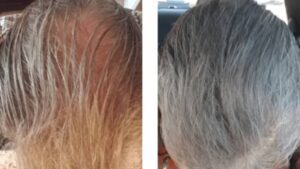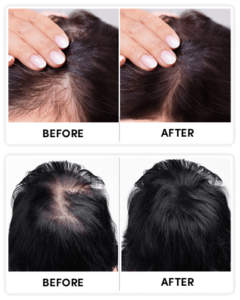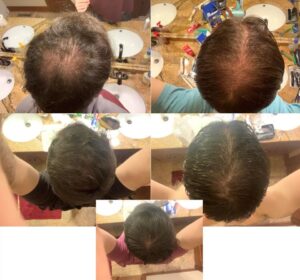The Hair-Loss Cure: A Comprehensive Self-Help Guide to Fuller Hair

Getting to Grips with Hair Loss
Hair loss can really hit hard, but it's something lots of folks deal with across the globe. Let's chat about the ins and outs of what makes hair fall out, the different kinds you might see, and how hair actually grows. Knowing these basics is your first step towards finding 'The Hair-Loss Cure: A Self-Help Guide' that clicks with you.
Why Does Hair Fall Out?
There are tons of reasons why your hair might start thinning. It could be down to your genes, changes in hormones, a health issue, or even the way you style your hair. Androgenetic alopecia, for example, is super common and often runs in families. Stress, not eating right, and some meds might also be to blame. Figuring out the cause is key if you want to tackle it effectively.
Different Kinds of Hair Loss
Hair loss isn't one-size-fits-all and shows up in different ways. You might have androgenetic alopecia—better known as male and female pattern baldness—or you might be dealing with alopecia areata, which causes patchy spots due to an autoimmune reaction. Then there's telogen effluvium, often triggered by stress or a shock to your system. Spotting these types can help you find the right fix.
The Hair Growth Cycle in a Nutshell
Your hair grows in cycles: anagen (growth), catagen (transition), and telogen (rest). Most of your hair is busy growing in the anagen phase. If this cycle gets thrown off balance, you might notice more shedding or thinning. Getting a handle on this cycle helps you understand why patience is a virtue in the world of hair regrowth.
The Hair-Loss Cure: A Self-Help Guide
Starting your journey to thicker hair means having a plan that's all about you. This self-help guide will show you how to assess your hair loss, set realistic goals, and build a hair care routine that's just for you.
Figuring Out Your Hair Loss Type
Before jumping into treatments, it's crucial to nail down what type of hair loss you're experiencing. Take a good look at your scalp, think about your family's hair history, and consider any recent changes or stress. A dermatologist can help with a professional diagnosis if you're unsure. This step ensures you’re tackling the issue head-on.
Setting Goals You Can Achieve
Everyone's after a miracle cure, but keeping it real is important. Hair growth takes time—sometimes months before you see changes. Set small, achievable goals to keep yourself on track, and adjust your expectations based on your hair’s unique cycle and condition. Remember, every bit of progress counts!
Creating Your Own Hair Care Routine
Your hair care routine should be as unique as your fingerprint. Pick products that suit your hair type and concerns. Regular scalp massages can boost blood flow, and steering clear of harsh chemicals will protect your locks. Consistency is key—stick with it and tweak as needed to see the best results.
Top Trichologist: Do This To Your Scalp To Regrow A Full Head Of Hair

Completely natural and dirt cheap way that makes it possible for you to finally regrow all your hair back.
Learn moreChanges in Lifestyle for Better Hair
Revamping your lifestyle can do wonders for your hair. From what you eat to how you handle stress, these tweaks can support your hair growth journey.
Eating Right for Stronger Hair
Your diet plays a big role in your hair's health. Make sure you're getting plenty of protein, iron, and vitamins A, C, D, and E, along with zinc and omega-3s. Foods like eggs, spinach, and fatty fish are great for giving your hair the nutrients it needs to thrive.
Keeping Stress in Check
Stress can really mess with your hair, causing issues like telogen effluvium. Try out stress-busting activities like meditation, yoga, or regular exercise. Not only do these help your mental health, but they also create a better environment for your hair to grow.
Why Sleep Matters for Hair
Good sleep is vital for your health, including your hair’s vitality. While you snooze, your body gets to work repairing and regenerating, including your hair cells. Aim for 7-9 hours of quality sleep each night. A calming bedtime routine and a sleep-friendly environment can boost your hair health.
Topical Treatments and Natural Ways
If you're after less invasive options, topical treatments and natural remedies might be your go-to. Let's see what's out there and how they can fit into your hair growth plan.
Over-the-Counter Hair Loss Solutions
Products like minoxidil are easy to find and have helped many people promote hair growth. They're simple to add to your daily routine, but remember to follow the instructions and be patient—results can take a few months to show up.
Natural Remedies: Worth a Try?
Natural remedies like onion juice, coconut oil, and aloe vera are popular among those wanting an organic approach. While science hasn't fully caught up, many swear by these for boosting hair health and shine. Test them out to see what works for you, but do a patch test first to avoid any unwanted reactions.
Using Essential Oils for Hair Growth
Essential oils like rosemary, peppermint, and lavender are often praised for their hair-growing potential. When used right, they can improve scalp health and circulation. Mix these strong oils with a carrier oil like jojoba or coconut and apply them to your scalp regularly for the best results.
Watch Your Hair Come Back FASTER Than You EVER Dreamed Possible

WITHOUT Expensive Medications, Lasers, or Painful Surgeries!
Try this at homeAdvanced Treatments and Expert Advice
If you’re not seeing the results you want from DIY methods, it might be time to explore advanced treatments and seek professional help.
Taking a Look at Prescription Medications
Prescription meds like finasteride can be effective for some hair loss types. They work by tackling hormonal imbalances that lead to thinning hair. Chat with your doctor to weigh the benefits and possible side effects before starting any prescription treatment.
Laser Therapy for Hair Growth
Low-level laser therapy (LLLT) is a non-invasive approach that uses light to encourage hair growth. It's considered safe and can be done at home or in a clinic. While results can vary, many people notice improvements in hair thickness and growth over time.
When to See a Hair Loss Specialist
If you've tried everything and nothing's working, it might be time to see a specialist. A dermatologist or trichologist can provide a detailed diagnosis and a personalized treatment plan. Their expertise can help you navigate the often tricky world of hair restoration.
Everyday Hair Care Tips
Small tweaks to your daily hair care can make a big difference in keeping your hair healthy and preventing further loss.
Picking the Right Shampoo and Conditioner
Choosing products that match your hair type and concerns is crucial. Look for shampoos and conditioners without sulfates and parabens, which can strip your hair of its natural oils. Ingredients like biotin, keratin, and niacin can help support hair strength and growth.
Hair Washing Tips to Cut Down on Loss
Proper hair washing can prevent unnecessary breakage. Use lukewarm water and gently massage your scalp to boost circulation. Don’t wash your hair too often, as this can strip it of essential oils, making it dry and brittle.
Styling Tips to Keep Your Hair Safe
The way you style your hair can affect its health. Steer clear of tight hairstyles that stress your hair follicles. Use heat styling tools sparingly and always apply a heat protectant. Go for natural styles and let your hair air dry when you can to reduce damage.
Why The Ancient Samurai Warriors Never Lost Their Hair…

guaranteed to work for any men or women out there...
Watch nowSuccess Stories and Testimonials
Hearing others' success stories can be super motivating. Learn from those who've successfully walked the path to fuller hair.
Inspirational Stories of Hair Growth Success
There are plenty of success stories out there, each one unique and inspiring. Some have overcome big hair loss challenges with persistence and personalized strategies. These stories can offer hope and practical tips for your journey.
Lessons from Hair Restoration Triumphs
Those who've hit their hair restoration targets often have valuable lessons to share. From the importance of being consistent to the need for patience, their experiences can guide and inspire you as you work towards your goals.
Finding Your Community for Support
Connecting with others who are on the same journey can give you emotional support and practical advice. Online forums, social media groups, and local meetups are great for sharing stories, asking questions, and finding encouragement.
Keeping Up the Good Work
Once you've made noticeable progress, it's important to keep it going. Here are some tips to ensure long-term success.
Keeping Track of Your Hair Growth
Regularly monitor your hair growth to see what's working and what isn't. Take photos and measure your hair's length at consistent intervals. This will help you stay motivated and make smart decisions about your hair care routine.
Adjusting Your Routine as Needed
As your hair changes, so should your routine. Be open to switching up products and methods to suit your evolving needs. Stay informed about new treatments and trends to keep your hair care regimen effective and current.
Staying Motivated on Your Hair Journey
Keeping your motivation high can be tough, but celebrating small wins can help. Remember why you started and keep visual reminders of your progress. Surround yourself with supportive people who understand your goals and encourage you to keep going.






